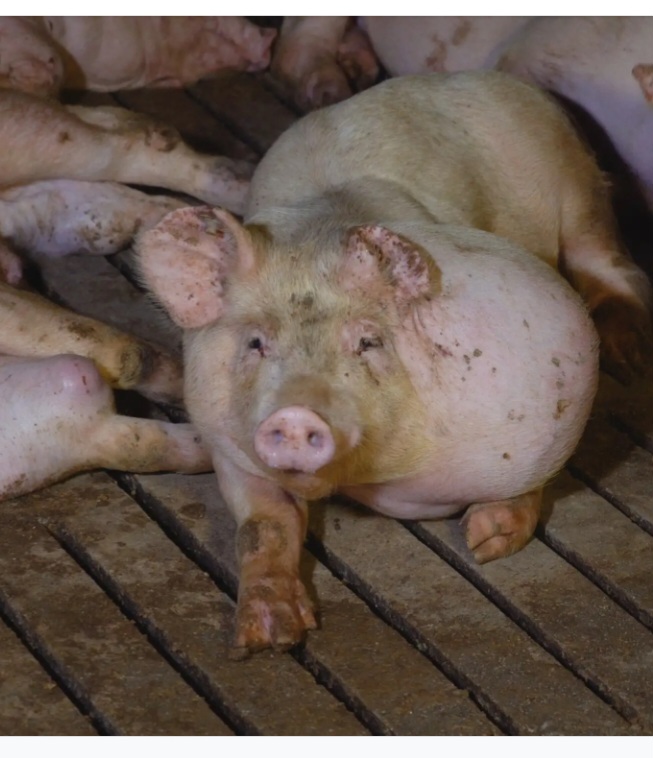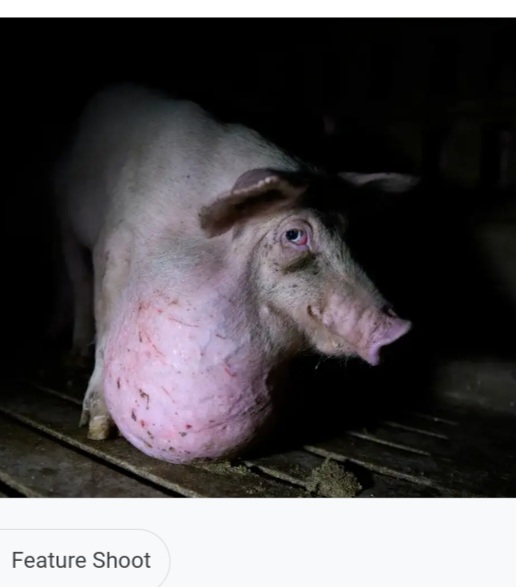
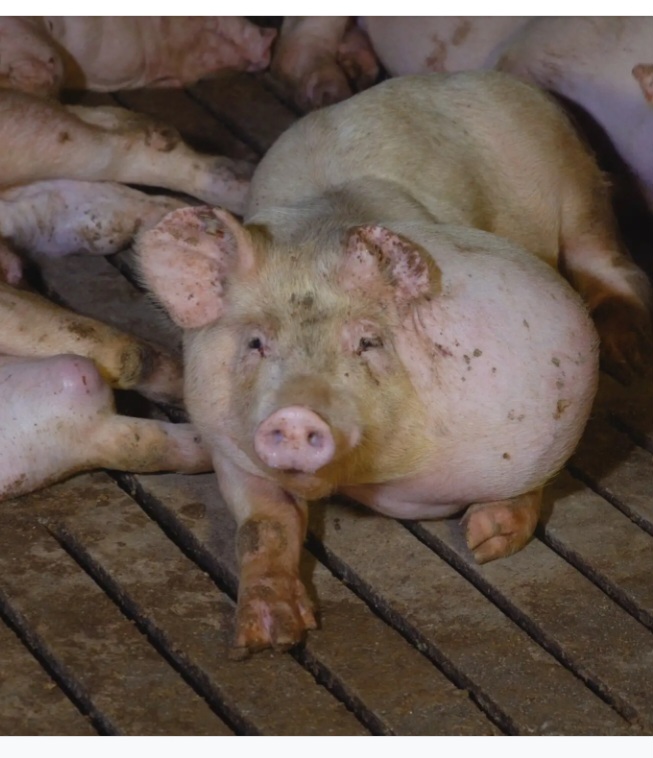
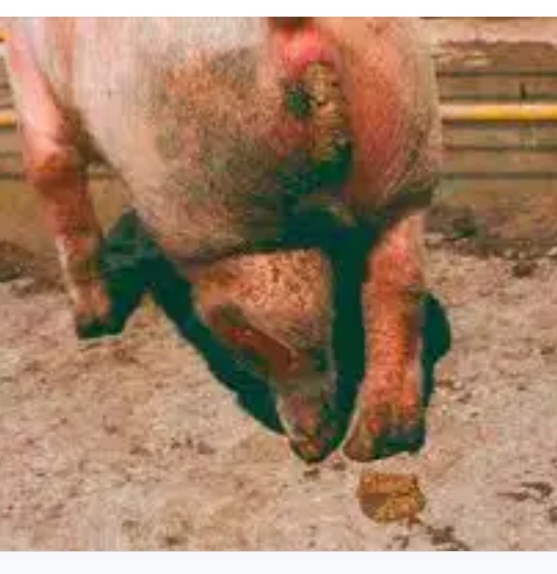
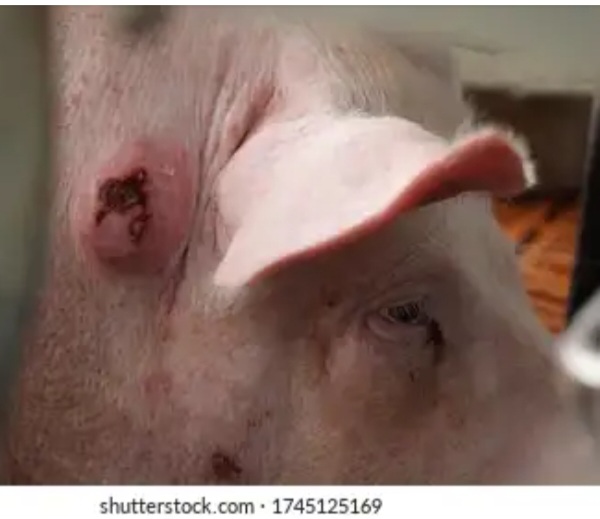
An abscess is a cavity filled with pus and dead cell material, usually due to inflammations caused by bacteria. The bacterium has access to the body when there is a break in the skin or via external orifices (openings). All pigs are susceptible to this condition. Abscesses are usually walled off from the rest of the body tissues. The bacterium can be circulated through the blood stream to establish new abscesses elsewhere in the body. Most abscesses in pigs develop near the skin surface. Abscesses have a raised or swollen appearance with fluid content when aspirated. Pigs with abscesses presented for slaughter could be condemned during inspection. It is important to identify and treat abscesses as soon as they are noted.
Causes
- Trauma to the body from: fights, sharp objects, teeth removal and tail biting
- Infections caused by Streptococcus spp and Staphylococcus spp such as Greasy pig disease. Abscesses can also arise from secondary infections following other conditions such as swine pox and porcine reproductive and respiratory syndrome (PRRS)
- Poorly administered injections
- Abscesses may develop around joints following fractures
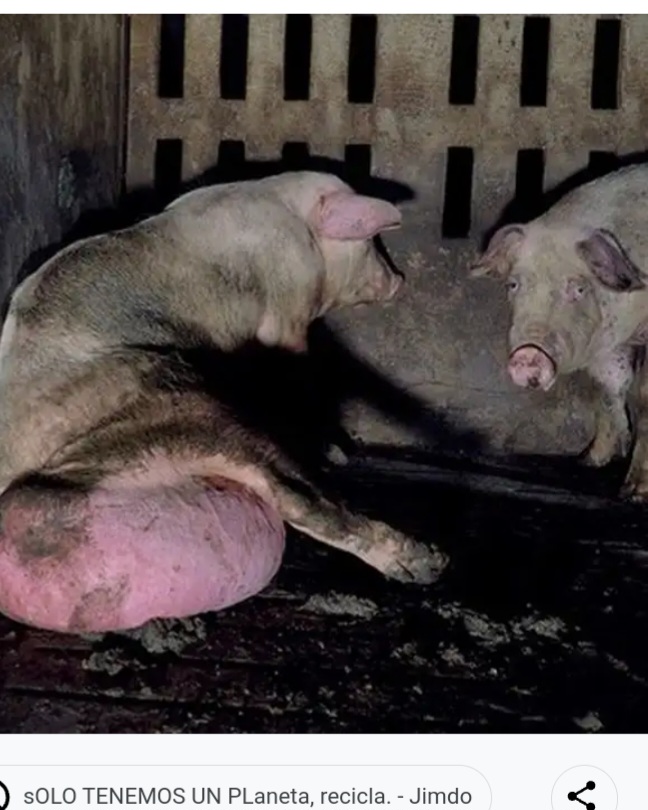
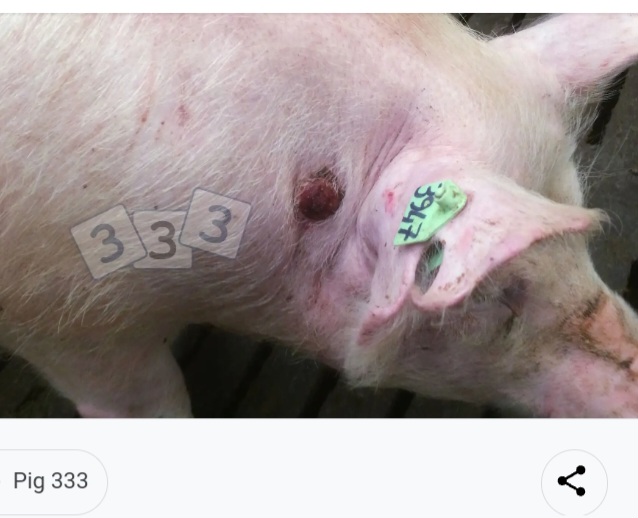
Clinical signs
- Swellings on the body with swollen sites often filled with pus or blood
- Pain/discomfort
- Possibly emaciation and death.
- Ulcerations on the skin
- Lameness (particularly spinal abscesses and those found around the joints and limbs)
Treatment
Treatment aims at draining pus from the affected area and preventing spread of the infection. Sometimes draining occurs naturally when the abscess bursts. Others may require lancing (surgically opening to drain). Kindly seek medical attention (visit your Vet for assistance). Treatment may include topical penicillin/ oxytetracycline/amoxicillin based ointments and systemic medications for about 3-5 days.
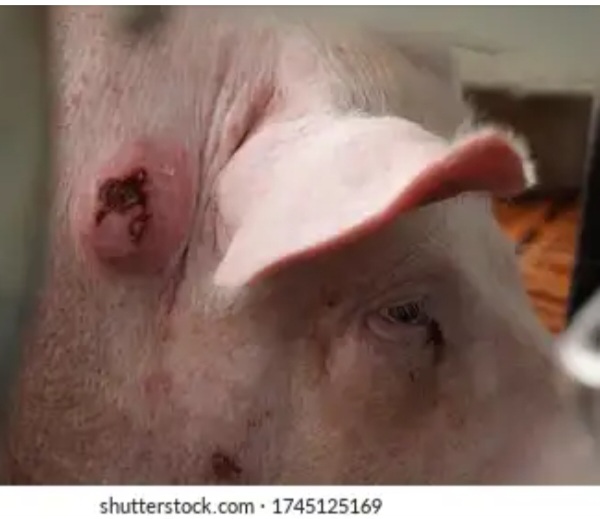

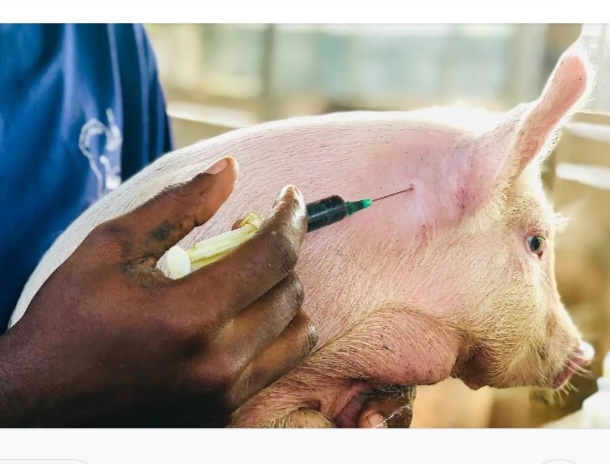
Prevention
- Ensure sharp objects are removed from the pig pens and its surroundings
- Ensure pigs are not crowded in pens and separate aggressive ones to avoid fights
- Long-acting antibiotic injections given at the time of damage will often prevent infection.
- Avoid anything that would stress or cause discomfort to the pigs
- Ensure medications, especially injectables are administered by veterinary professionals and instructions provided on medication must be adhered to

